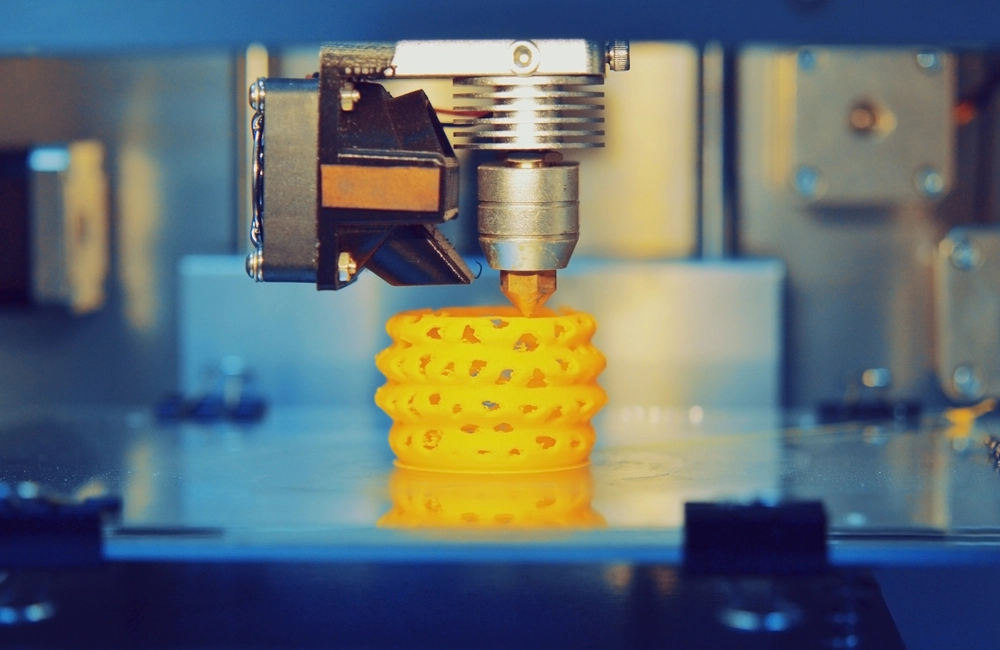
3D printing, also known as additive manufacturing, is a process of creating three-dimensional solid objects from a digital file. It involves building up layers of material, typically using plastics or metals, to create a physical object.
The technology has revolutionised manufacturing and product development, allowing for the creation of complex shapes and designs that were previously difficult or impossible to produce using traditional manufacturing methods. It has also made it easier and more affordable for individuals and small businesses to create custom products and prototypes.
Table of contents

How does 3D printing work?
The process of 3D printing begins with the creation of a digital 3D design, typically using computer-aided design (CAD) software. The design is then sliced into thin layers, and the 3D printer follows the digital instructions to build up the object layer by layer.
There are several different technologies used in 3D printing, including fused deposition modelling (FDM), selective laser sintering (SLS), and stereolithography (SLA). FDM involves extruding a thin stream of molten material, typically plastic, through a nozzle to build up the layers of the object. SLS uses a laser to sinter, or heat and fuse, powdered materials, such as metal or plastic, into a solid object. SLA involves using a laser to solidify a liquid resin, creating a solid object layer by layer.
What industries use it?
3D printing has a wide range of applications and is used in a variety of industries, including:
Manufacturing: the technology allows for the production of customised parts and tools, reducing the need for large quantities of inventory. It can also reduce the lead time for producing new products, as it allows for on-demand production.
Healthcare: 3D printing is used to create custom medical equipment including prosthetics, implants and surgical instruments, as well as to produce small batches of medication. It has also been used to create models of organs for surgical planning.
Architecture: 3D printing can be used to create prototypes and models of buildings and structures, allowing for the creation of complex designs that would be difficult or impossible to produce using traditional methods.
Education: The creation of low-cost models and prototypes makes 3D printing a useful tool for educators in fields such as engineering and design.
Consumer products: 3D printing has been used to create a variety of consumer products, including jewellery, phone cases and home decor items. It has also been used to produce customised products such as shoes and eyewear.
The author generated this text in part with GPT-3, OpenAI’s large-scale language-generation model. Upon generating draft language, the author reviewed, edited, and revised the language to their own liking and takes ultimate responsibility for the content of this publication.






